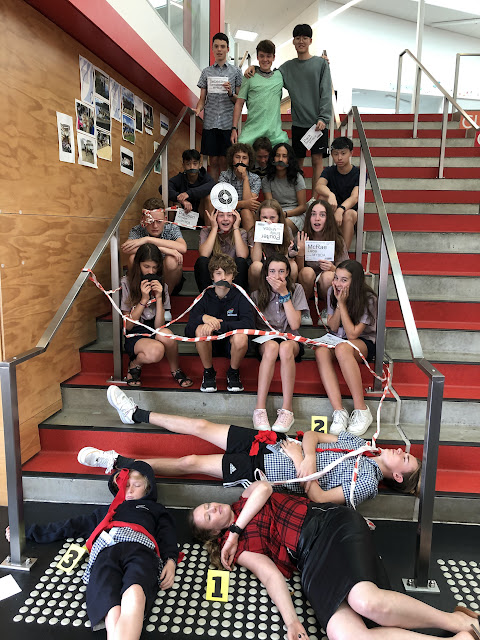How do we ensure that learning is progressing for every student?
Perhaps the most important thing that I have learned in my 10+ years of teaching is that more teaching doesn't mean more learning. More explanations at the front of the class doesn't mean more learning is happening. More worksheets and more tasks don't mean students are making progress. So what does make a difference? In my opinion, it is those three fundamental questions from John Hattie, how are you going, where are you going, where to next. If students do not know what they are supposed to learn, how they are supposed to learn it, and what their next steps are to learn it, then how can they take charge of managing their own learning? How can they develop a shared responsibility and a shared sense of agency?
There are a number of practices that I have embraced and focused on doing consistently to ensure that my students know what they are supposed to learn, how they are supposed to learn it, and what their next steps are to learn it. There is overwhelming evidence that shows Assessment for Learning not only improves agency and shared responsibility, it also accelerates progress for Māori and Pasifika students. While it is easy to think of Assessment for Learning as more work, like everything, the more you practice something, the easier and faster you become at it. I am really proud of the effort I have put into developing Assessment for Learning practices that are at the core of my teaching practice.
Here are some of the things that I have noticed that really make a difference for my students.
Instant feedback quizzes
There are a number of reasons why I love Kahoot, Gimkit, Blooket, Quizizz and the Google Forms quiz function in Google Classroom. First of all, their reporting functions tell me in a quick, minimal-effort way where my students need additional support in their learning, who needs additional support, and who needs to be extended. It means that class time can thus be prioritised for maximum impact.
The second reason I love instant feedback quizzes is because it gives students instant feedback about their progress in understanding ideas. I also frequently set a quiz for two weeks at a time on Quizizz. Students are then expected to reattempt the quiz until they can improve their score. This allows students to have a concrete but simple next step in their learning. This is particularly great in science where large amounts of vocabulary are often a barrier to student learning.
As a separate perk, I also appreciate that students who struggle to produce evidence of their learning find a gamified quiz a much less intimidating way to show their progress.
Google Classroom
- Rubrics
I have set up a separate Google Classroom called Rubrics. In this Classroom I have created lots of rubrics that students often need feedback on, or things that I am tracking. Eg. I have a work completion rubric, a SOLO taxonomy rubric, and a paragraph writing rubric. I have also added the rubrics against which we assess for reporting purposes. Having these rubrics in their own classroom means it takes me all of one minute to add the relevant rubric to a task in Google Classroom. I can then also very quickly give feedback on student work by just clicking the relevant part of the rubric. I have also set each of these up with grades which helps track over time which students are falling behind, excelling, or making good progress.
- Gradebook function
The grade book function in Google Classroom is a great way to track student progress. However, I found it most powerful when I tag assignments that will be used for formal assessments and deciding report grades. This helps students know where to prioritise their efforts. In addition, about a week before I start marking for formal reporting purposes, I get students to look at their overall grade on Google Classroom and then reflect on whether they are satisfied with what grade this translates to on their report. This usually results in a flurry of activity and prioritisation as students then do some really purposeful work where they focus not just on getting work done, but improving the quality of their work. This means that students also actually pay attention to the feedback I leave them on their work. - Comments functions
Google Classroom allows you to save a bank of comments. This means that when you type feedback comments on student work, it automatically starts suggesting the full comment. As a result, I have saved comments for common feedback items eg. "This question asks your to explain in depth, hence, you will need more detail in your explanation. Try this PEEL writing guide to help you gain more depth." I then also include the link the necessary resource to help coach the student through their specific next step. This amazing Google Classroom feature means that the process of giving feedback is sped up as I don't spend hours typing and copying and pasting the same things. It also means that I can point each student to the resource they need for their next step in a much more expedient way.
ChatGPT
- Check the accuracy of the biological claims in this text. Make an itemised list of inaccuracies.
- Compare this text with the following criteria. (Insert achievement criteria).
- Check this text for any redundancy. Make an itemised list of things that can be removed from the text.
Next year I am keen to continue exploring the use of AI in helping students get better, more timely feedback on their learning. I think I might just have to finally invest in ChatGPT 4.
















.jpg)

